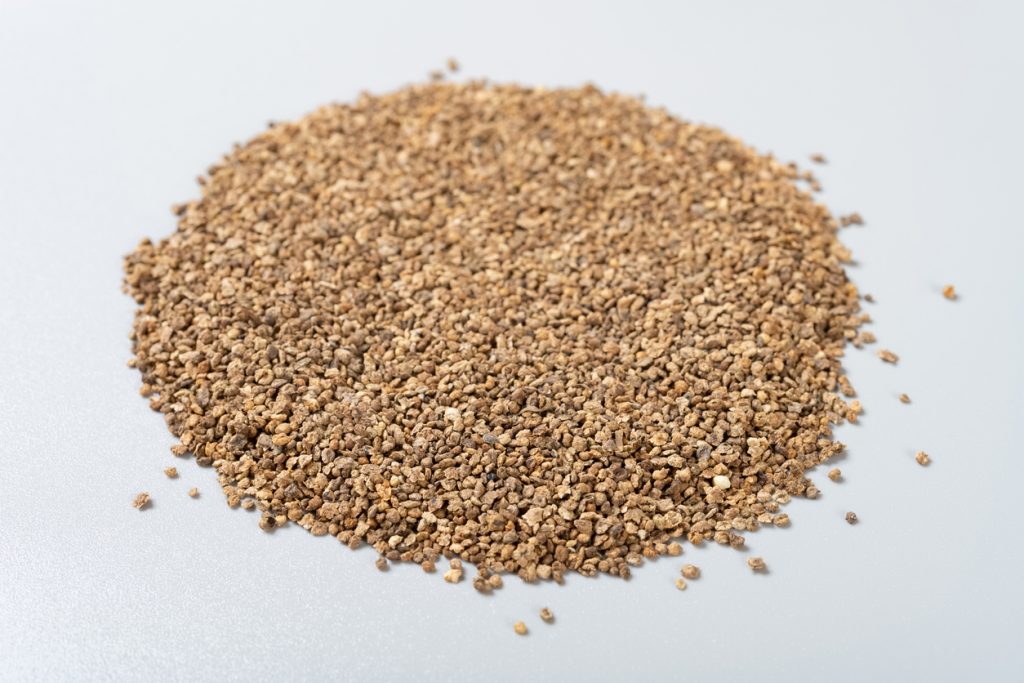Belvedere Fruit

What is Belvedere Fruit?
Belvedere Fruit (di fu zi, 地肤子), also known as the Kochia Scoparia or Fructus Kochiae, comes from a small type of shrub that is nicknamed the Broom Cypress. This shrub is similar in appearance to the common tumbleweed and is extremely hardy. In China, Kochia grows predominantly in the Hebei, Shanxi, Shandong and Henan provinces.
The fruit of this shrub is harvested when it ripens in the fall, then cleaned and dried under the Sun for medicinal use.
In Traditional Chinese Medicine (TCM), Belvedere Fruit falls under the category of ‘Herbs that drain Dampness’. Cold in nature, Belvedere Fruit can help individuals who have too much Heat in their body, such as those experiencing a Yang Excess or a Yin Deficiency, to restore a healthy yin-yang balance.
Sweet and bitter, Belvedere Fruit can slow down acute reactions, detoxify the body and has a tonic effect by replenishing qi and blood in the body. Also, the fruit can cleanse the body by clearing Heat, drying Dampness and promoting elimination via urination or bowel movements. In particular, Belvedere Fruit targets the Urinary Bladder channels.
Functions and Benefits of Belvedere Fruit
Traditional Chinese Medicine (TCM) shows that Belvedere Fruit has the following health benefits.
Belvedere Fruit can clear Damp Heat to treat stranguria and promote urination to tackle illnesses such as dysuria, dribbling, difficult and painful urination due to Damp Heat in the bladder.
Also, Belvedere Fruit can dispel Wind, clear Heat and remove Dampness from skin to alleviate itching. In fact, it is one of the essential herbs for dermatosis. Some examples of itching and skin disorders that Belvedere Fruit can treat include eczema, scabies, Tinea Versicolor and urticaria due to Dampness on the skin or Damp Heat on the genitals. For Damp Heat accumulated in the lower energizer manifested as vulvae itching, the fruit can be combined with Ku Shen, Long Dan Cao, and Bai Fan for external washing.
Some also use Belvedere Fruit to expel Wind-Heat that is affecting the eyes and the head. For example, this fruit can be used to relieve swollen, painful eyes.
Other internal usage include inflammation, Kidney infections, and certain sexually transmitted diseases such as gonorrhea. Externally, Belvedere Fruit can be used to treat boils, ringworm, and other skin conditions. It can be used alone, or combined with other herbs as part of a larger formula.

How to Use Belvedere Fruit
The recommended daily dosage of Belvedere Fruit is 3 – 15g, when steeped in boiling water to make a decoction. Some practitioners may suggest slightly higher doses (10 – 15g), so it is best to consult your healthcare provider before deciding to add Belvedere Fruit to your healthcare routine. Different conditions require different dosages of herbs to be treated effectively.
For external application of Belvedere Fruit products, do follow the instructions given to you by your healthcare provider as it can differ significantly across different individuals.
Dried Belvedere Fruit can be found in most herbal stores and Asian markets. Other than the dried fruit, it can also be found in forms such as powder, extract and capsules.
Cautions and Side Effects of Belvedere Fruit
As of this writing, there are no significant side effects observed with regards to the consumption of Belvedere Fruit.
However, Belvedere Fruit should not be consumed by individuals who are not experiencing Damp-Heat symptoms. Also, Belvedere Fruit should not be consumed together with Hai Piao Xiao.
We strongly encourage you to consult your healthcare provider first before deciding to add Belvedere Fruit to your healthcare routine.
Summary
Here is a summary for Belvedere Fruit:
- Herb name (Chinese): 地肤子
- Herb name (Pin Yin): dì fū zǐ
- Herb name (English): Belvedere Fruit
- Herb name (Botanical): Fructus Kochiae
- Origin of species: Kochia scoparia (L.) Schrad.
- Part(s) of herb used: Fruit
- Geo-specific habitat(s): Most parts of China
- Taste(s) & Properties: Pungent, better; Cold; Administrates the Kidney and Bladder meridians
- Actions: Eases difficult urination due to internal Heat; Relieves itchiness in the pubic region and other skin irritations.
References
Choi, Y. Y., Kim, M. H., Lee, J. Y., Hong, J., Kim, S. H., & Yang, W. M. (2014). Topical application of Kochia scoparia inhibits the development of contact dermatitis in mice. Journal of Ethnopharmacology, 154(2), 380-385.[Accessed on 22nd October 2022]
Jo, S., Ryu, J., Han, H. Y., Lee, G., Ryu, M. H., & Kim, H. (2016). Anti-inflammatory activity of Kochia scoparia fruit on contact dermatitis in mice. Molecular Medicine Reports, 13(2), 1695-1700. [Accessed on 22nd October 2022]
Share this article on
